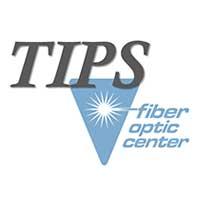
At FOC, we are contacted daily as a resource for test and inspection support for fiber optic cable assemblies. Degraded IL/RL results is a common topic we offer technical expertise for establishing rigorous production controls. As we develop custom procedural guidelines for assessing conditions of test cables, track usage, and reasonable replacement schedules, many helpful tips become highlighted.
For a quick reference, we have compiled a few tips that can help enhance your manufacturing process.
Tip # 1: Check the stability of your test setup after referencing
After performing an IL reference, leave the test lead attached directly to the power meter, and observe IL values as you move your reference cable around the workbench a bit. There should be very little power level variation (0.00 +/- 0.02 or so at most). If the power level varies when you move your reference cables around, then there is likely a problem in your test layout (either a bend / pinched fiber, or poor adapter connection, etc.).
Tip # 2: Determining cause of high loss
Higher wavelengths are more sensitive to loss due to excessive fiber bending. Lower wavelengths are more sensitive to loss due to fiber misalignment in the adapter. If you are testing a SM cable and having trouble reaching your IL specifications, take a look at the IL results at 1310nm and also at 1550nm. In a perfect world, both results should be “equal” (within about 0.02 dB or so). If the 1550 result is much higher than 1310, then the main cause of the loss is likely excessive fiber bending somewhere in the assembly. If the 1310 result is much higher than 1550, then the main cause of the loss is likely poor fiber-to-fiber alignment at the connector mating.
Tip # 3: Make sure ferrules are dry before connecting
Alcohol is often used to clean end-faces prior to mating. If any liquid remains on the end-face, it can act as an “index matching” fluid when mated to another connector, giving falsely-high RL values. To ensure accurate RL results, make sure the end-faces are clean AND DRY prior to mating (note: this is another reason why it is always recommended to use 99%+ pure alcohol for cleaning, as lower purities contain higher percentage of water, and will not evaporate as quickly).
Tip # 4: Negative IL values are IMPOSSIBLE
When you insert light into one end of a cable assembly, there will ALWAYS be LESS light coming out the other side——there is ALWAYS some amount of light lost—it is impossible for a passive cable assembly to create light. If you test IL on a cable assembly, and the result is a negative value (meaning, you are getting more light OUT of the assembly than was put IN by the test-lead), then your setup reference is invalid and needs to be zeroed again.
Tip # 5: Protect the detector
For accurate IL results, it is critical that your test system’s photo detector is clean and free of scratches or other such defects. The surface of the detector should be inspected periodically, and cleaned as needed (inspecting with a 5x magnification eye-loupe should be sufficient). BUT BE VERY CAREFUL when cleaning, and refer to the test system user manual for proper detector cleaning practices—-some detector surfaces have a film of anti-reflective coating which can degrade if cleaned with alcohol.
A damaged photo-detector can cause major testing problems, and can very expensive and time-consuming to fix. Make sure to check with the equipment manufacturer on recommended photo-detector care.
Tip # 6: Test Lead Quality
“A chain is a strong as its weakest link”, as they say. And when it comes to IL and RL test systems, that weakest link is typically the test lead. Even with the best available sources and power meters, if your test lead is of poor quality, your IL results will be of poor accuracy and repeatability. The core-to-ferrule-OD concentricity of the test lead is critical to getting accurate and repeatable IL results—-particularly when testing Singlemode, as the core is so small (~8um) that even small eccentricity will result in significant core-offset when mated to your DUT, giving erroneous IL measurement values.
Test lead ferrules should be of the highest quality and tightest dimensional tolerances you can find, and should be polished to meet or exceed typical industry standards for geometry and visual appearance, and should have a core-to-ferrule-OD eccentricity value of 0.5um or less. (Again, this is more significant for smaller core sizes than larger core sizes, as any eccentricity effects will be more pronounced with smaller core fibers). Consider storing and using a master cable to test your test leads when everything else looks good, but results still seem off.
Tip # 7: Equipment Connector Check and Cleaning before the test
Prior to testing, it’s important that the equipment interface connector have an “in air reference” Return Loss reading of a minimum of 65 dB pending the dynamic range of instrument. MAPS are usually -75 and below. Checking process depends on equipment manufacturing. Call us for details.
In addition, the old rule “Inspect and clean” before use is a must. Equipment connectors with dirt and damage to fiber end-face can affect the readings and possibility damage the DUT. A good fitting probe scope and tip is an absolute as most connector interfaces are not easily accessible. You cannot rely on swab cleaning alone.
Clean the DUT!
Do you have a specific issue regarding testing and inspection?
We’re here to help! Send us your question, and we’ll do our best to provide guidance. FOC is committed to helping you manufacture the best fiber optic cable assemblies in the world.
FOC is a resource for questions on this and all technical subjects. AskFOC can be found at: https://focenter.com/askfoc/ where our technical experts answer your questions.
ADDITIONAL FOC TEST ARTICLES:
- How to accurately measure IL/RL – This article discusses why it’s important to measure Insertion Loss and Return Loss and how to accurately measure IL/RL. Plus, I offer specific advice regarding whether to use a mandrel wrap, index matching gel, or Optical Time Domain Reflectometer (OTDR) when measuring RL.
- What causes poor IL/RL? – In this nuts-and-bolts discussion, Dan Rocheleau and I address multiple production issues that can cause poor Insertion Loss and Return Loss, along with specific recommendations to remedy the issues.
- Insertion Loss measurement, not a trivial task – If your production facility is new, should you make your own launch jumpers? This might not be a good idea, at least initially. Also, did you know that launch jumpers should use the same fiber type, not just the same size? Here at FOC, we have seen problems mating bend-insensitive fiber to the regular type. You’ll get even more tips in this article.
- Encircled flux – a relatively non-technical overview – The IEC 61280-4-1 Standard sets out to define the distribution of light (flux) at the launch into the device under test. “Encircled flux” is a rather grand way of saying the amount of light inside each circle of a given size within the core. This article addresses why the standard regarding flux is important and how to get consistent EF-compliant measurements.
- Is Bi-Directional testing the silver bullet to cut all your optical testing time in half? – Many cable assembly houses look to Bi-Directional testing as a time savings. However, some do not accurately use this test method. Hint: This test requires the use of a launch AND a receive cable, so when light is shot in one direction there is a launch, and when it’s shot in the opposite direction there is also a launch. Read on to see if you need to adjust your test method to fully utilize the Bi-Directional feature.
- Test cables don’t last forever: How to assess quality, condition, usage limit, and replacement schedule - Provides guidelines to implement procedures to assess the condition of test cables, track usage, and create a reasonable replacement schedule.
- Patch cord gain: Shedding light on this perplexing issue - Discussion on the measurement method to determine how some patch cords show ‘gain.
- Which passive component tester to purchase? Start by answering 7 basic questions to get correctly configured fiber optic test equipment - 7 foundational questions. This will help prepare you to order a PCT with the right test set configuration for your fiber optic product.
Additional resources from the FOC team include:
- View Test Technical Solution Content
- View the Glossary, Acronyms, Military Specifications for Connectors
- Q&A Resource: email technical questions to AskFOC@focenter.com


